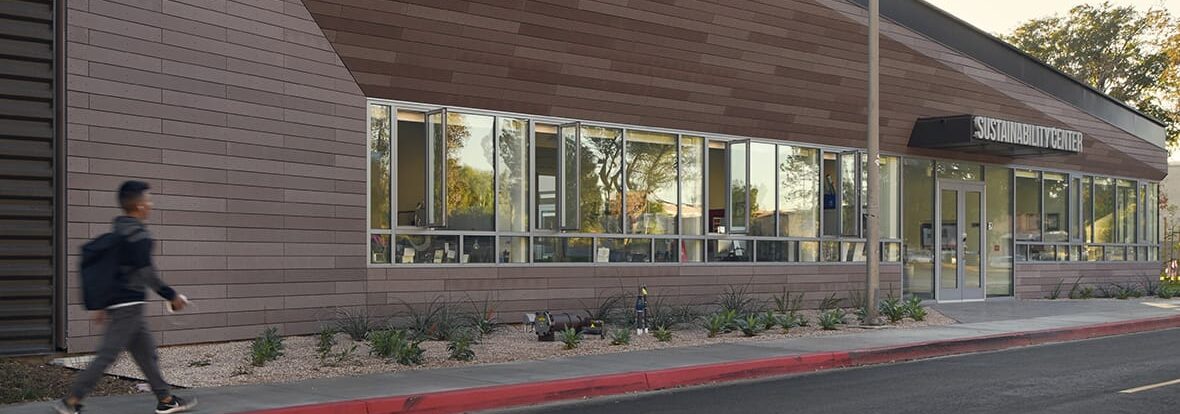We realize that when our collective use of the Earth’s resources outweighs what we give back, we lose balance, or sustainability. Being sustainable means preventing the depletion of natural resources with the purpose of maintaining a stable balance in our environment.
Cal State Northridge
In the construction industry, good building partners can help create sustainable facilities. Gilbane Building Company has gone beyond the status quo to reach our sustainability objectives and to reduce environmental impacts. At California State University, Northridge (CSU), a LEED Platinum, student-funded, sustainability center is winning awards and attention throughout the design world for its community impact. The collaboration behind the CSU Associated Students Sustainability Center—a 9,275-square-foot, $4.5 million build—is an unusual one, involving campus leadership, the CSU Institute for Sustainability, student groups, partners in architecture, construction, and consulting, and other community stakeholders.
Campus Sustainability Features
The goal was to create a multi-functional space to serve as a campus recycling collection station, a hub for student sustainability programs, and an administrative home to the Institute for Sustainability. The vision was to become the focal point for the university’s and surrounding community’s environmental programs. Approximately 30 students participated in the programming phase of building, which includes a solar roof system, gray water irrigation system and composting toilets. The solar panels cover a 5,000-SF yard space, providing 25 kilowatts of energy, enough to meet the building’s needs and support the goal of becoming a carbon-neutral campus.
The solar system provides hot water for the center’s sinks and showers. Used water feeds into a gray water collection tank that irrigates native and drought-tolerant landscaping around the building. The center’s air conditioning system uses a connection to windows to maximize ventilation. Restrooms include composting toilets that convert waste into clean compost.
These sustainability efforts not only help create opportunities for the building’s occupants to lead healthier lifestyles, but they also help the environment by lowering overall carbon footprints.

